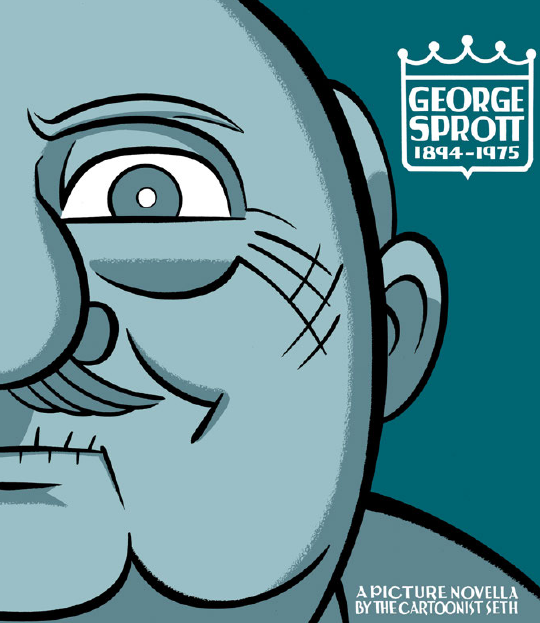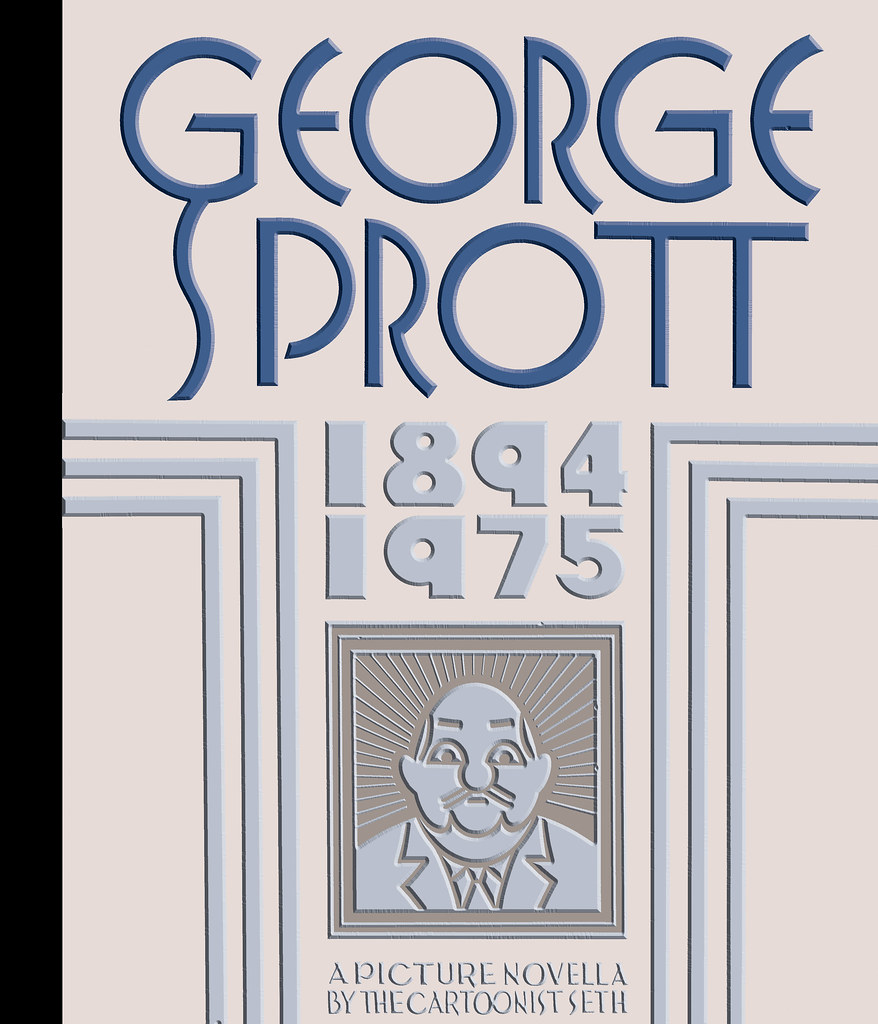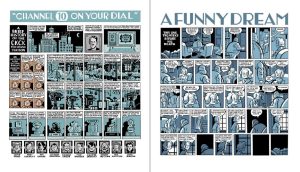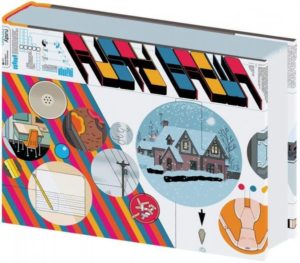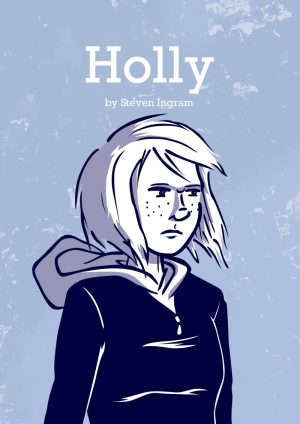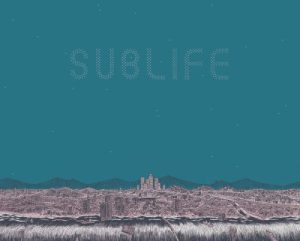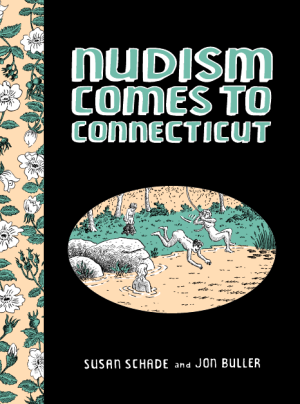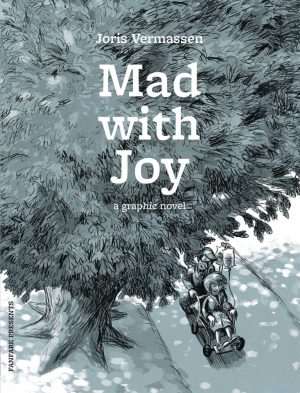Review by Frank Plowright
George Sprott is large sized, but may otherwise seem slim, yet the appearance belies a density achieved by Seth via collecting the packed single page strips featuring small panels originally commissioned by the New York Times magazine. Given a freedom of topic, Seth chose to spotlight a fictional local TV celebrity of years gone by, starting with a contemplation of life with Sprott still in the womb.
Via an anonymous narrative voice, Seth dances about Sprott’s life, initially only offering bare bones biographical details, although these are plentiful. In the pre-video era from the 1950s to his death in 1975 Sprott was the popular mainstay of small Canadian broadcaster CKCK, reminiscing about trips he made to the Arctic Circle when a younger man. While that might seem to ridicule the parochialism of local broadcasting, enough reverential allusions to the importance of regional identity provide balance.
Seth delivers a thoroughly immersive tour constructing a world around Sprott to the extent of strips on the diner where he ate and the theatre where he lectured. It’s similar to a TV documentary, but using the form of comics for additional material film doesn’t offer, an example being the construction of an entire day’s schedule for CKCK, with Sprott the centrepiece. Readers can absorb such delights as broadcasting beginning each day with Voice of the Farm.
The George Sprott presented is a composite. Beyond scenes from childhood, it’s largely left to others offering their view of Sprott, which are wildly contradictory, thereby not supplying a complete picture. It leaves a distance between reader and subject, although Seth’s thoughtful presentation of those others is delightful. Horror show host Sir Grisly Gruesome isn’t shown in his pomp, but trading on what little celebrity remains as one of many obscurities signing autographs at a show. The narrator is uncertain and incompetent, perhaps a rambling equivalent to Sprott himself, forever apologising for omissions and a lack of clarity. Yet despite this he has access to Sprott’s thoughts, feelings and regrets, and eventually reveals we’re witnessing the final hours of a life.
As with all Seth’s projects, George Sprott is imbued with a wistful, sentimental nostalgia. Connections are meticulously made, later strips providing the answers to small mysteries set earlier, Sprott’s dreams revealing truths he conceals, and showing how Sprott’s defining characteristic is selfishness. Other than briefly during the largely wordless three page inserts considering events from the past, Sprott only speaks for himself when answering an interviewer in a pair of strips offering his thoughts on assorted subjects. Honesty prevails, if with a veneer of pomposity.
The slim original story is surrounded by new material offering a richer experience, along with pictures of Seth’s models of featured locations. Also new is a fold out section depicting the fragmented flashing by of Sprott’s life as he dies, and the prologue and epilogue.
So what does Sprott’s life amount to in the end? That’s depressingly true to life, and bleakly amusing. As he noted in one of his interview pages, he made his bed and learned to lie in it. That’s probably what Seth felt at times, having chosen to make the hardcover edition an oversized artefact, almost genuinely a coffee table book, but it’s a remarkable presentation for ambition satisfied on every front.
